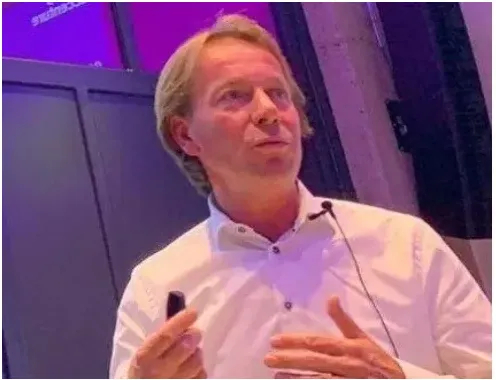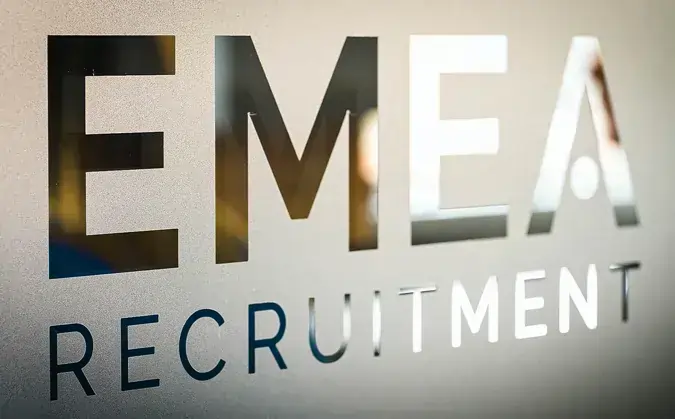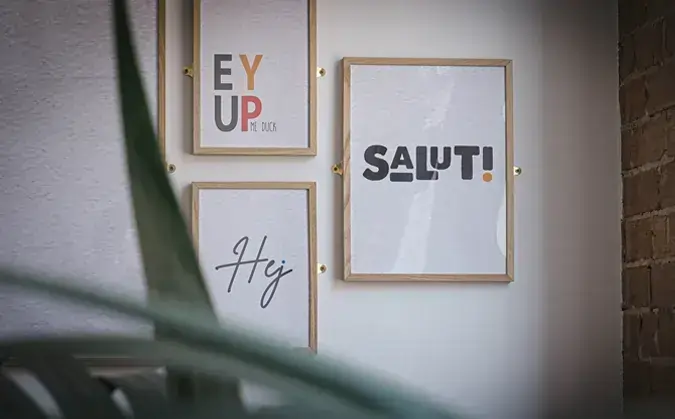Herman Rolfers - Director of Global Digital HR Transformation at HEINEKEN


Herman Rolfers has been Director of Global Digital HR Transformation at HEINEKEN for little over seven years. In this fascinating interview, he looks back on a series of unplanned career moves that led him to his current role and discusses some exciting technological initiatives afoot for the globally-renowned beer brand.
Can you tell us about how your career’s developed – and the risks you’ve taken to accelerate your career growth?
That’s an interesting question and I’m probably not going to answer in the way you’d expect, because, in truth, you don’t always need a plan to progress in your career. Opportunities very often emerge for themselves; you just need to be able to see them. You also need to be curious, open to challenges, and willing to step out of the comfort zone. That is when real growth happens. As for the risks – well, they’re relative.
At university I studied Organisational Sociology – a field that pays attention to the internal structure of the organisations such as the managerial hierarchy, as well as to the external structures that connect organisations, such as strategic alliances. I thrived on the conceptual nature of it, learning how things evolve and then seeing the theory put into practice within a company or institution. Despite loving university life, I chose not to pursue an academic career in science and began my career as an HR Manager in aerospace. It was something of a pressure cooker and, in that environment, you need to keep a sharp mind: think on your feet and have a plan to keep up with the competitive dynamics of the industry.
I was involved in some amazing global initiatives while I was there. I remember stepping into the Head of HR’s office and seeing a date on a whiteboard. It was the deadline for transferring a whole section of the business and its people from the Netherlands to the U.S. No mean feat. The company also needed me to help find low-cost engineering facilities to enable portfolio expansion to build a solid foundation to unlock future growth.
It wasn’t your typical HR job; more working out how to get from A to B and fast! It required not just speed, but also agility, and ensuring we had multiple options on the table to navigate any challenges that arose along the way. It was not the first time I realised the importance of rooting my actions in sound strategic thinking and planning, while embracing a flexible, fast-moving mindset to get things done. ‘More than one road leads to Rome’, as they say.
That same mindset was needed when I worked for a global logistics and supply chain company, operated in both freight management and contract logistics. It was a Global HR Operations role, also part of the Mergers & Acquisitions team. During my tenure, our biggest assignment was working on the disentanglement of a global division: not something I signed up for at all. It just ‘happened’ because it was associated with the role that I was hired for.
Again, that taught me critical skills that I was able to take forward into my next role at a global pharmaceutical company, where one of my key objectives was to partner with new colleagues to integrate a global business unit following an acquisition. Further down the line, following yet another acquisition, I had to disentangle what I’d integrated! Again, it was a pressure cooker environment, completely unplanned, but by now I was equipped with the skillset and the mindset to handle it.
My next move was into insurance, pension and asset management – again a completely different industry - and one of my key responsibilities there was technology related. To be clear, I’m not a ‘techie’ – I'm an organisational sociologist – but technology brings huge opportunities to standardise, simplify and codify HR processes, to better support the business and drive a fundamental different employee experience. Again, I found myself in a position where I had to upskill and develop very quickly. That’s what eventually led me to my role here at HEINEKEN, where I was asked to do a similar job – but this time on a bigger global scale and with much greater complexity.
If you’d told me 10-15 years ago that I’d be leading HEINEKEN’s global digital HR transformation, I’d have replied that it was a ridiculous projection! Yet, this is the nature of career progression. I didn’t have a grand plan, but I saw opportunities and went after them, upskilling myself along the way. I’m enjoying it here, big time!
How are you collaborating with others to help HEINEKEN’s HR technology forward – and what’s the end goal?
The context is always key: understanding what you want your organisation to become and the part that technology plays within that. Two of HEINEKEN’s ‘must-win’ battles are to become the best-connected brewer and to unlock the full potential of our people and the organisation. This is where the conversation starts.
At a day-long planning workshop with HEINEKEN’s People leadership team, we put those two strategic goals front and centre and decided that, as a Global People Function, we wanted to become a fully employee-centric organisation and people insights led. This became our North Star: the guiding light to bring everyone in the organisation together, to keep us as leaders speaking the same language and moving the initiative in the right direction. Every organisation needs such a shared and compelling vision – especially when considering what emerging technology can do for your people and the organisation.
The next step is to ask business leaders to define their wish list from technology within the People domain. Of course, in a global organisation this runs the risk of producing an incredibly long list! We framed the question differently using design thinking to engage our key stakeholders and define the ‘personas’ typically found within HEINEKEN. Together we created a set of employee journeys and identified each persona’s expectations, for example on how they are onboarded and progress their careers. At this stage that we brought in the People teams who know their process inside-out and could apply them within the boundaries of the design principles.
Next step: implementation! We knew this was going to be a long and challenging journey, during which we needed to test our capabilities and create proof points for success. We identified six ‘early wins’ and set ourselves the objective of implementing in full, on-time and within budget. After the six early wins, moving on to Asia, the Americas, Africa, the Middle East and finally Europe. We were able to expand the scope of our work, adding greater value along the way.
As useful as platforms like SAP SuccessFactors, Workday or Oracle may be, they don’t provide a silver bullet and there will always to be gaps to fill. To do that, we decided to leverage our position as a global brand and hold a competition called the ‘HEINEKEN Brewhouse’; a cross between Dragon’s Den and a hackathon, open to start-ups, scale-ups, universities and our partners.
Brewhouse’s guiding philosophy is that innovation can come from anywhere and the aim was to create win-wins for both HEINEKEN and participating start-ups. The winners each take part in an innovation sprint, to drill down into how their solution can be used to solve our challenges. It still gives me a rush of adrenalin when I look back on it today, it is so exciting.
HR transformation will never be straightforward and through the HEINEKEN Brewhouse we are able to demonstrate that as a corporate business, we are prepared to fail fast and fail forward through experimentation. We’ve since the inaugural event in Singapore, hosted a second event in Amsterdam and there will be another in California mid-September of this year. We learnt how to better frame our challenges and identify what we need and don’t need, while start-ups or scaling businesses gain valuable experience applying their solutions to large and complex organisations creating a win-win for everyone.
I’m also a big fan of collaborating with other global brands. It’s my dream to bring these brands together one day, facilitate meaningful collaboration, and inspire the industry to dream big. By collectively inviting startups and scale-ups to showcase their innovations, and using ourselves as a testing ground, we can foster a vibrant community of innovators. Whether we’re creating a unique onboarding process—one that’s seamless, fun, engaging, and informative—or any other initiative, collaboration enriches the process and strengthens the culture at the heart of every successful company.
Looking to the future, where do you think HR technology at Heineken will go next?
I believe in business-led IT. Each function should have a technology leader – not necessarily someone who’s ‘techie’ themselves, but who deeply understands that function and can inspire their teams to reach for exciting and pioneering new solutions to achieve common goals. For example, I recently brought some of our partners in to talk about Generative AI. What is it? What can it do for us? Where’s the potential? How can it help to unlock the full potential of our people and the organisation?
We’re interested in how AI can help us to build a stronger, leaner and more agile Global People function – one with increased productivity that creates better outcomes both for our employees and for HEINEKEN as a business. Our business and expectations of employees are changing continuously: “what got us here, won’t get us there”. We need to build on the foundations we’ve laid, making our ways of working more efficient and effective and further improve the employee experience
We are exploring the potential of GenAI alongside our ambition to balance productivity (automation) with better outcomes (augmentation) for our people and the organisation. We’re a growth company and we aspire to unlock the full potential of our people and of the organisation.
Leveraging GenAI in our processes has the potential to enhance efficiency, decision-making, further improve the employee experience and we will start to integrate it with small, targeted use cases. This approach allows us to assess the impact of GenAI on specific areas, minimizing potential risks and providing valuable insights. By gradually expanding our use of GenAI we can unlock its full potential and ensure a seamless integration with our existing practices.
Our exploration around harnessing GenAI will always be anchored in a robust business case and with a profound understanding of the size, focus and cost dynamics of our People Function. We’ll continue to ensure that strategic initiatives are not only technologically sound, but also financially prudent with tangible and measurable outcomes including a positive ROI.
Is HEINEKEN doing anything to reskill employees to get them ready for this new world that AI is likely to create?
No aspect of our journey with technology is ever completed and upskilling is one of these continual upgrades. Managing change effectively is critical in planning any transformation and, of course, one size never fits all.
We need to constantly educate ourselves and our people to be ‘digi-fit’, to cope with the challenges in the automated and augmented world of tomorrow. We segment our audiences to make sure we thoroughly understand them and deploy targeted interventions and messaging at each stage of the change curve.
We’ve learnt a lot about how benefits and difficulties will be perceived across OpCos and geographies. I think we’ll need to take a similar approach when it comes to managing the implications of Gen AI over time. Remember; nothing is every finished, just upgraded.
Thank you to Herman for speaking to Katie Insley, Director in our Human Resources recruitment team in the Netherlands.
Views and opinions contained within our Executive Interviews are those of the interviewee and not views shared by EMEA Recruitment.






You can also use your social account to sign in. First you need to:
Accept Terms & Conditions And Privacy Policy